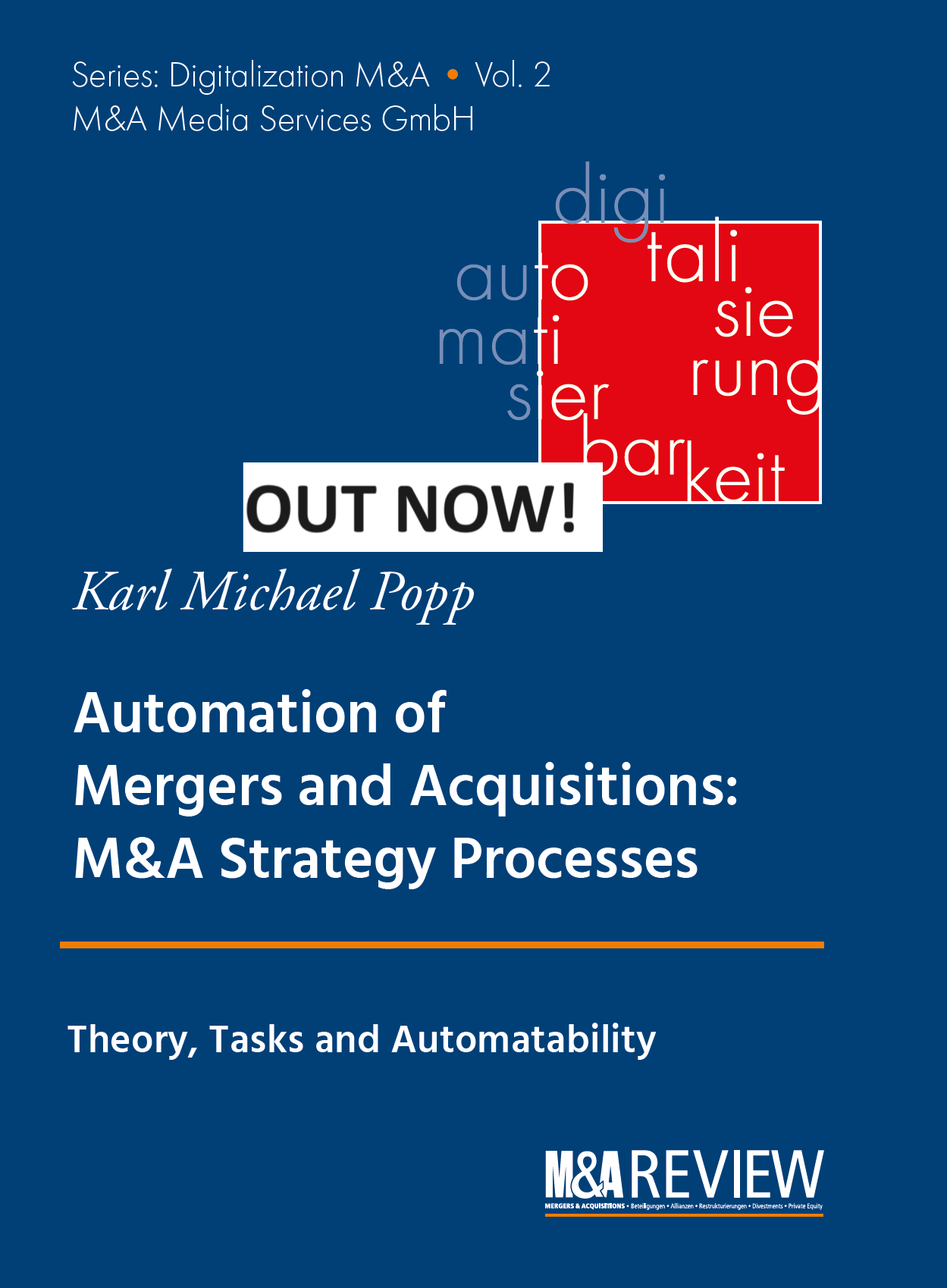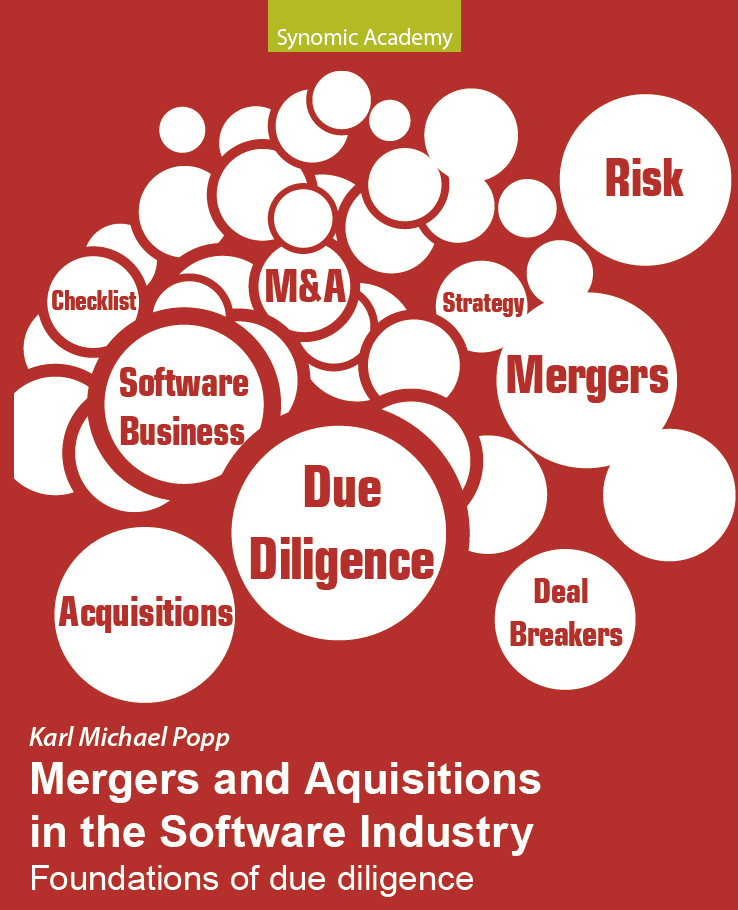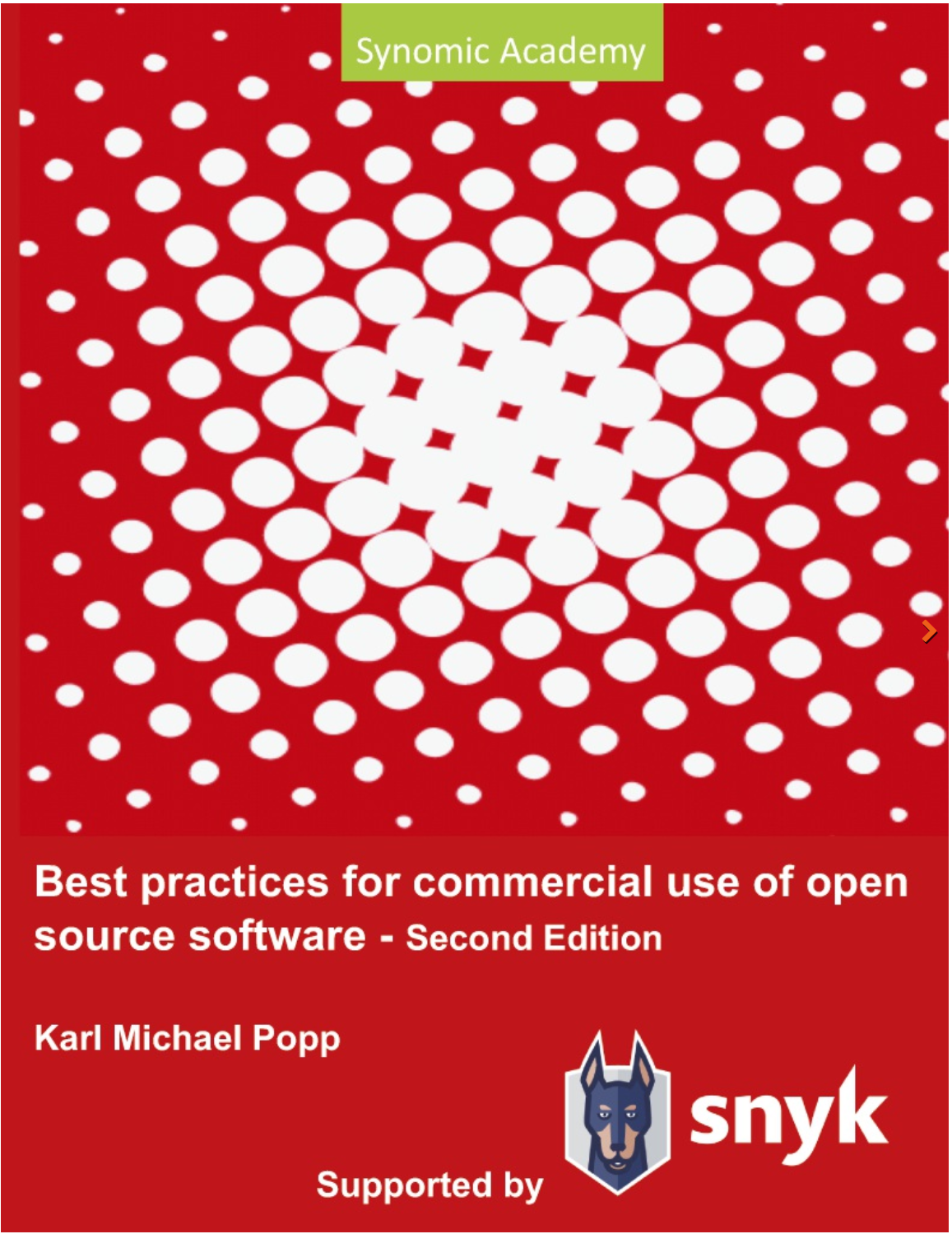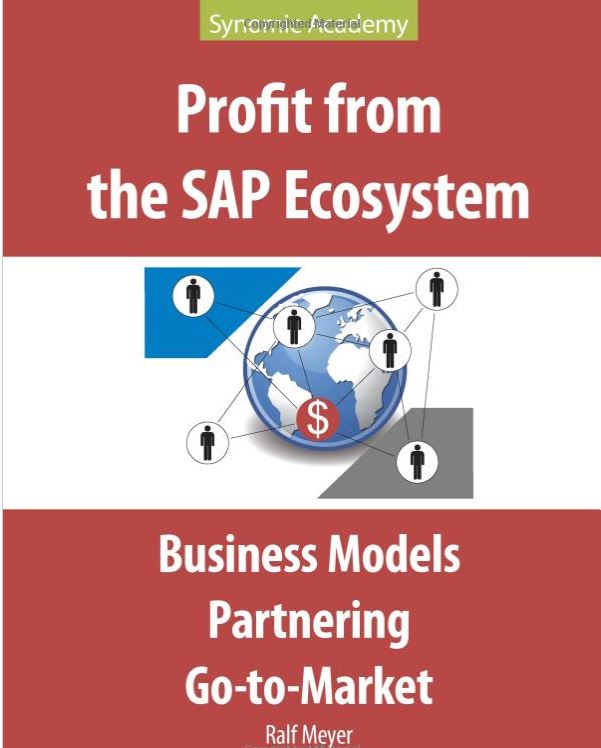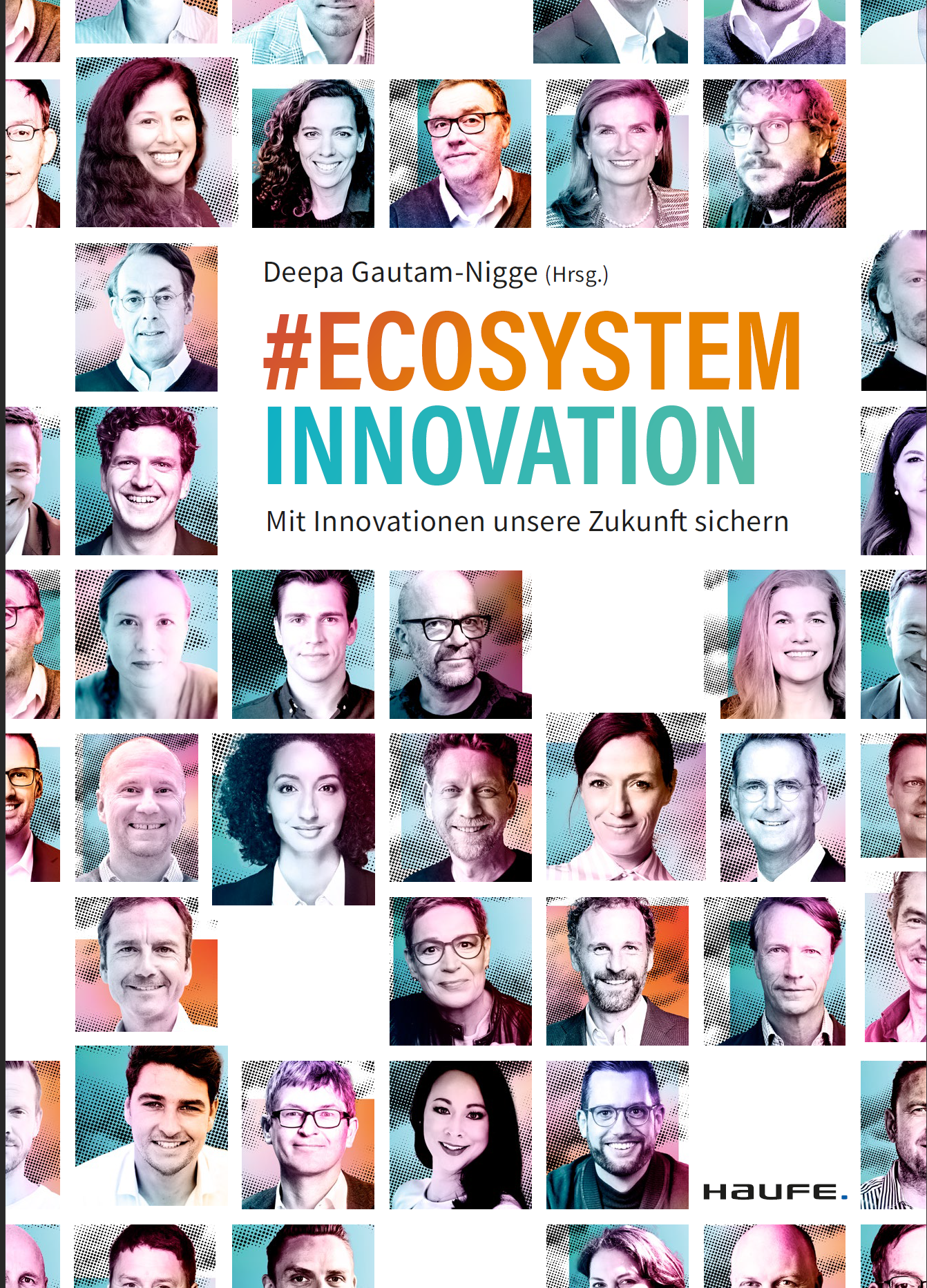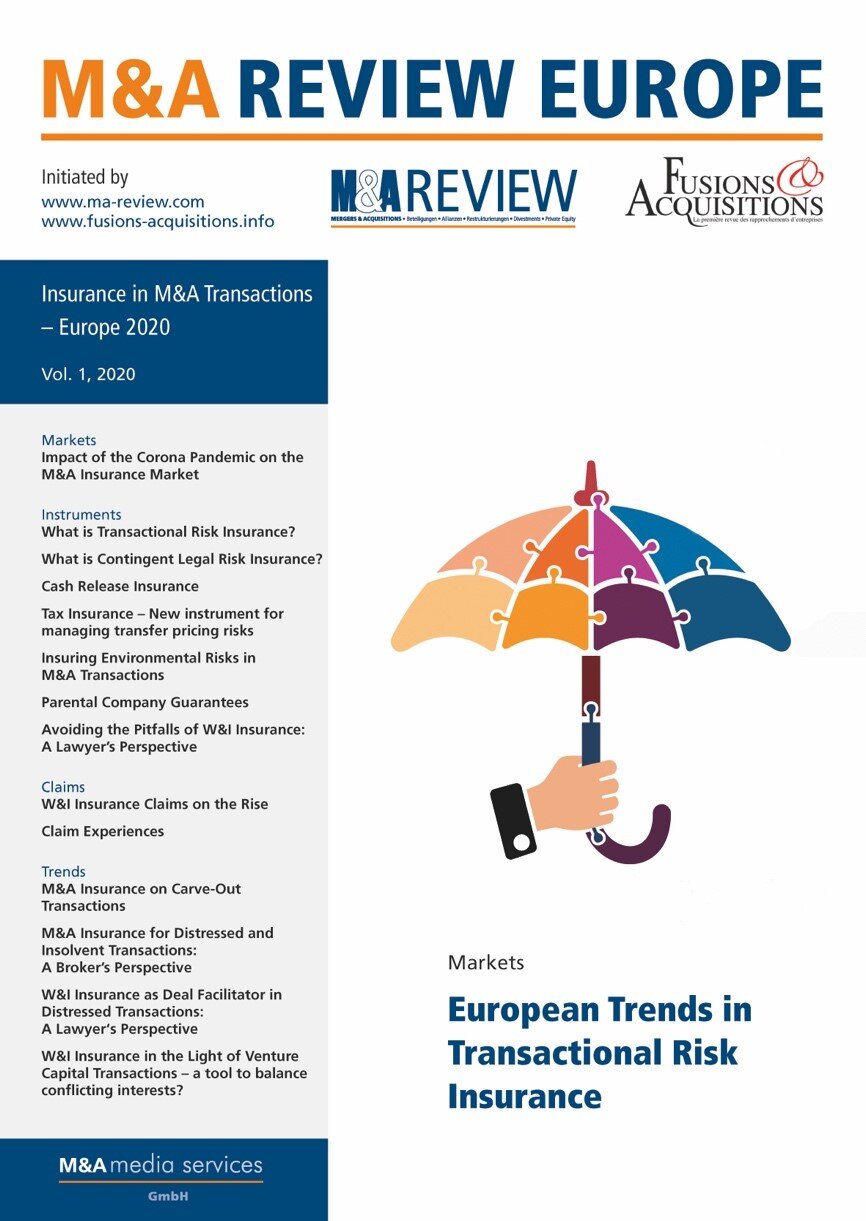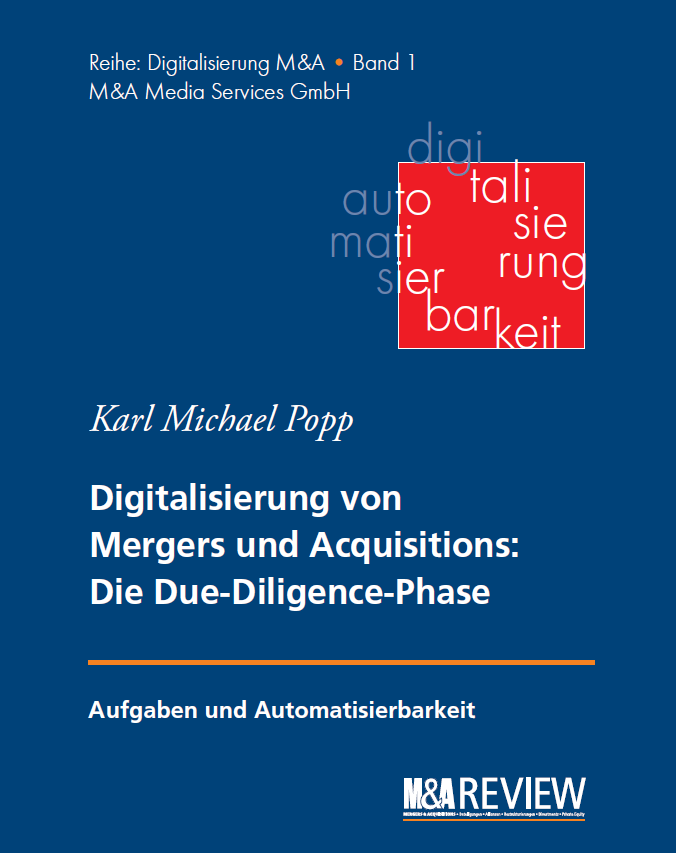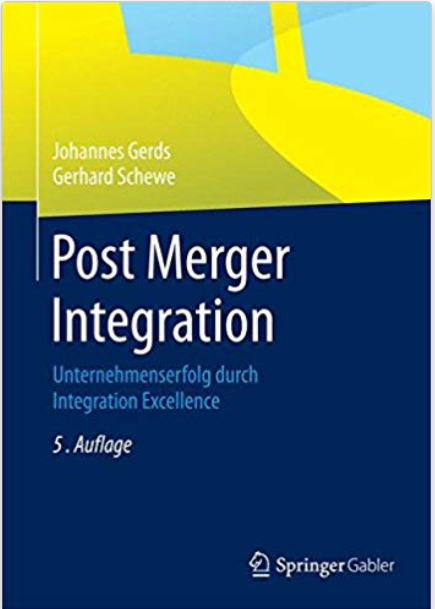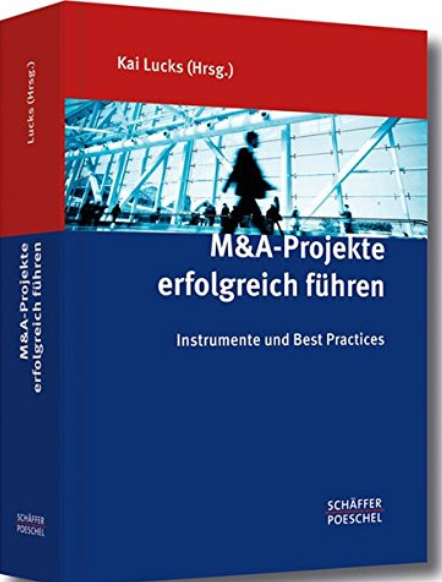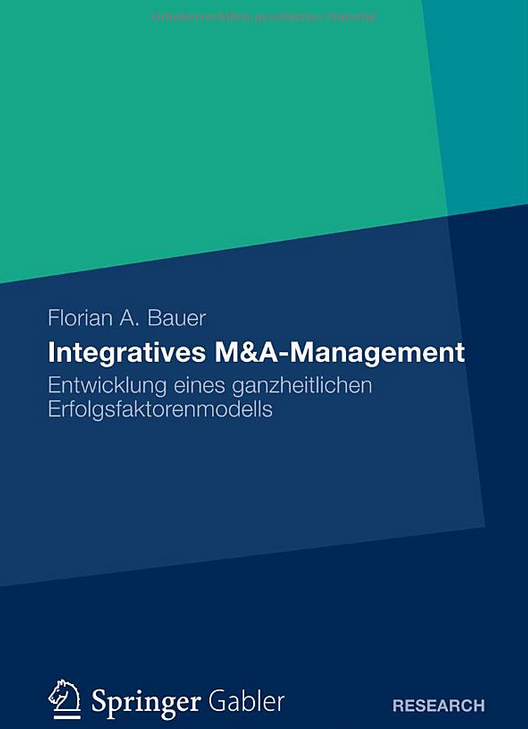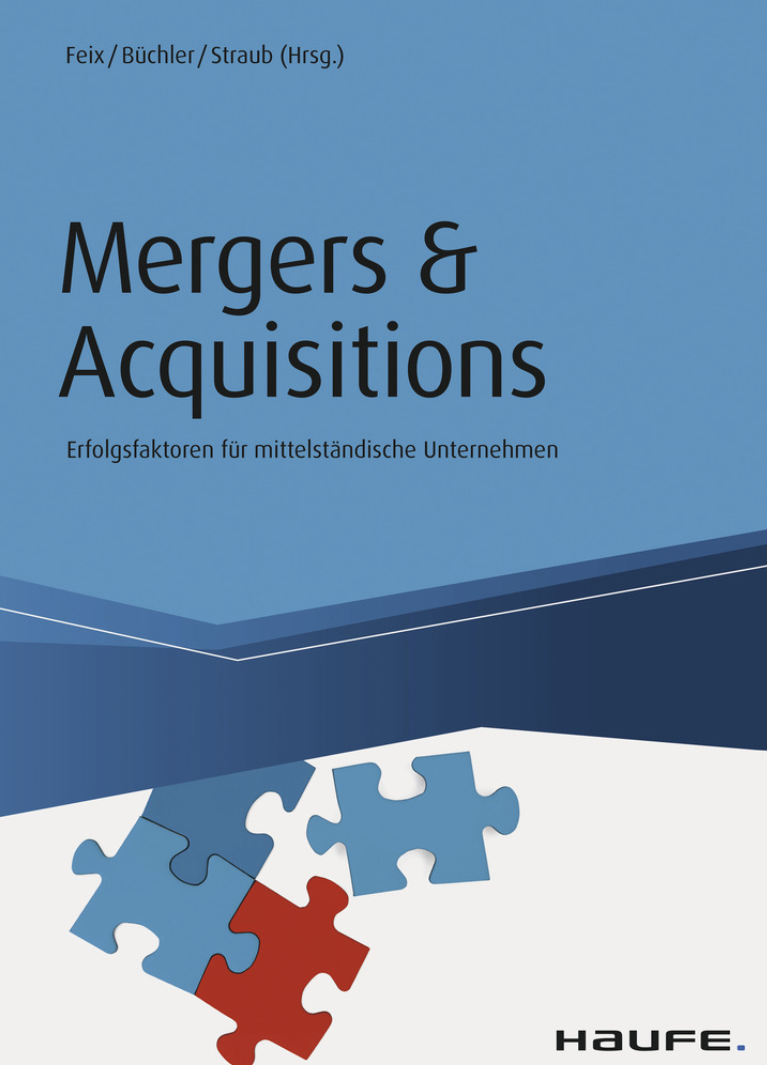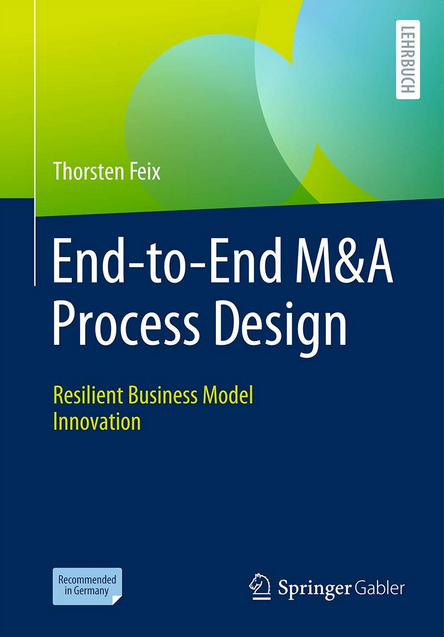Disruptive Business Models in the software industry and beyond
The European Workshop on Software Ecosystems is an annual event which connects top notch researchers and business professionals in the field of software and platform ecosystems as well as business networks. Here is an example of a topic we will discuss at the event.
Software industry and disruption
The software industry is all about disruptive business models. The key question remains: How do you plan and build disruptive business models? What are examples of disruptive business models? What did companies with distruptive business models do different than other companies? How can a company offer for the prize of zero? All of these questions can be answered by looking at disruptive business models.
Business model canvas and disruption
Let us adress these questions based on the business model canvas. The business model canvas is a well known approach by Osterwalder to model business models. Osterwalder published his approach in the book Business Model Generation: A Handbook for Visionaries, Game Changers, and Challengers.
A business model is described there on a "canvas" that shows e.g. the value proposition, cost, channels, revenue, suppliers, key resources and key partners.
Here is an example of Google´s search business on the business model canvas:
Where in the business model can disruption happen?
Now that we know the business model canvas, we can take disruption mechanisms and put them into the canvas. I use the information from Mark W. Johnson´s ideas on seizing the white space and put them on the canvas. And i use information from Profit from Software Ecosystems book.
Let me explain some of the boxes below.
Offer standardized low price version of high price product
There is a high price product, like secure data rooms. You build disruptive business models by offering that product in a standardized low price version. Examples i like are
UberX, a service from Uber that offers cheap transportation services
Motel One which is a motel chain that offers very affordable overnight stays
Securedocs, who disrupt the secure data room industry by offering a cheap yet safe data room for companies.
Shop at home with device
Nothing is more convenient than shopping at home. Technology can put that convenience to a new level.
Here are my most-liked examples:
Amazon has invented Amazon Fresh, a device that can scan barcodes of products at home or can listen to your wishes. Just say: chocolate sprinkles and the sprinkles will be at your door the next morning.
Amazon Fire scans for products that can be ordered, from Amazon, of course. no more searching for names or products in catalogs. scan, shop, done.
hybris Commerce Suite: lets you shop on any device (smart tv, Ipad, Phone)
Integrate and combine channels
In some industries there are opportunities in integrating and combining channels to build disruptive business models. No matter how you reach customers to sell goods, no matter where customers turn their attention, you might leverage all these channels as one.
Here are my favorites:
Stylight social shopping. Stylight has integrated normal people showing off purchased apparel in social networks with a shopping experience. Pictures of these people can appear in the shop and items can be ordered right away.
Prize of zero fed by other revenue streams
There is no better way to disrupt than offering a product or service for a price of zero. But you have to make sure you get some compensation or you finance that business model with revenues from your other business models. Advertising revenue has been stressed a lot in the software business for this purpose, but it only works in rare cases. So, which other sources of revenue to fund a low price are there? Here are my examples:
Google search. The service offered by Google is free. If you look at it more carefully, there is a compensation. it is data about the interest and the searches a user starts. This data is sold to advertisers. Revenue from advertising feeds free search.
Communities instead of sales force
Outsourcing for the prize of (almost) zero and scaling your salesforce dramatically. These are the benefits of leveraging product communities for supporting, maintaining and even selling your products. Network effects can accelerate this effect even more. Examples are:
Nespresso community
Skype was and is mostly promoted by its community. the network effects of having additional people join.
Open Source communities
Do more to adress the job
Just do a little more than your competition. Sounds easy, but it might take some hard thinking to deliver. Here are examples:
German epost does not only store your mail while you are away from home, they will scan all incoming letters and provide them online for you to look at it.
Life is good. Social retail. Shopping is great. Might be even greater if you are doing good while you are shopping.
More information to come soon. Many of these ideas are in the book Profit from software ecosystems
Literature
Content on this site comes from the following book and the ones in the gallery:
Mergers and Acquisitions in the Software Industry
other background literature is:
Osterwalder, Business model generation
Mark W Johnson, Seizing the white space
R. Meyer, K.M. Popp, Profit from software ecosystems
Software partnerships and business models: Distributors
The European Workshop on Software Ecosystems is an annual event which connects top notch researchers and business professionals in the field of software and platform ecosystems as well as business networks. Here is an example of a topic we will discuss at the event.
Distributors
A Distributor gets software directly from a software vendor and sells this software to Authorized resellers. The relationship with Authorized resellers is handled by the Distributor.
Business Model Canvas for Distributor
The value proposition for the customer of the distributor is that he provides the distribution service to resellers and that the distributor provides great margins for the resellers and that he supports resellers in selling the solutions. The customer relationship is direct to the resellers. Customer segments cannot be determined in this generic distributor business model.
Revenue streams are license, support and maintenance fees flowing in from the customers and resellers to the distributor.
A distributor key activity for making business in this business model is convincing and onboarding resellers. As soon as the resellers are on board, the next key activity kicks in: enabling the resellers to sell. Key resources are sales support for resellers and support for the resellers´ customers.
More details and background information can be found in these books:
Software partnerships and business models: Revenue share
The European Workshop on Software Ecosystems is an annual event which connects top notch researchers and business professionals in the field of software and platform ecosystems as well as business networks. Here is an example of a topic we will discuss at the event.
Revenue share
The software vendor endorses the product of the revenue share partner. if the customer buys the partner´s product, the software vendor gets a share of the partner´s revenue.
Revenue share partnerships are also popular in the software industry and are usually used as door opener into other companies´ customers. Revenue share makes sense if the product offerings of the partner and software vendor are not competitive, but complementing.
Advantages of Revenue share are: software vendor participates in revenue that is generated by other companies, limited cost for software vendor for endorsing other vendor since cost of sales stays with the revenue share partner.
Business Model Canvas for Revenue share
The value proposition of this business model is clearly additional revenues for the partner, who does the revenue share with SAP. For the company engaging with revenue share partners, the generic model is not limited to specific customer segments. But depending on the products for the revenue share there can of course be customer segments.
Incentified by the revenue share, the company gets license, support and maintenance revenue streams.
Key activity is endorsing the partner´s software to start the revenue share, key partners are the software vendors providing the software. Key resources are the sales people hunting for customer contracts triggering the revenue share.
More details and background information can be found in these books:
Software business models: Google´s Business Model
The European Workshop on Software Ecosystems is an annual event which connects top notch researchers and business professionals in the field of software and platform ecosystems as well as business networks. Here is an example of a topic we will discuss at the event.
Google is a software company that started in the search and online advertising business and has extended its business to many other areas. Google´s revenue is mainly from broker business.
What Google does successfully is matchmaking between online advertisers and potential customers. But Google has more products and services than just online advertising and search. Let us have a look at the business model. We start with the products/services offered and the business model archetype.
Besides of Google´s main business as a broker, Google is a manufacturer of the Google Search Appliance, which is a hardware appliance that includes Google´s Search Engine. Target customers are companies, that should use the search appliance for searching their intranet. Inventor business at Google is mainly focused on inventing products for the broker business and for other SaaS offerings like Google Apps, Gmail or Google Voice. The SaaS offerings are created by combining the business models Physical Lessor, IP Lessor and Contractor. In addition, Google acts as a IP Lessor for browser, operating systems and content of books.
Google business model canvas
Looking at all major Google businesses the following Google business model canvas can be created:
The key value propositions of Google circulate around free and easy to use offerings as well as apps for end users as well as online advertising and cheap online solution for corporate customers.
Customer relationships in the Google business model canvas are mainly highly automated mass relationships, while some direct relationships are kept for corporate customers.
Revenue streams of Google will be analyzed further down on this page.
If we look only at Google search, we find the following business model canvas:
Google´s revenue models
This overview of revenue models is limited to large sources of Google revenue. As mentioned above, the main source of revenue at Google is from their broker business, which we will analyze in a little more detail below.
Now let us have a look at Google´s revenue model for the broker business. As you may remember, there usually is a compensation for every product and service, not necessarily as a payment. In Google´s case the non-monetary compensation for their search offering is the key to Google´s fortune.
Here you can see that Google´s search business basically provides a search service to search customers and a PPC (Pay per click) advertising service to its advertising customers. The compensation for the PPC advertising service is payment per click on an advertisement. The non-monetary compensation for the search service is data about the user who is searching.
Google´s revenue model synergies
The Google business model has two striking advantages: The information about the search customers is provided to Google for free and Google sells advertising space, perfectly matched with the customer in-formation, to advertisers via an automatic online auction.
So Google leverages a revenue synergy between the search and advertising business. The revenue model allows the revenue generated in the broker business to be used to carry the sunk cost and operations cost of offerings like Gmail and others.
Find more information on business models in the following books:
Software partnerships and business models: Certified solutions
The European Workshop on Software Ecosystems is an annual event which connects top notch researchers and business professionals in the field of software and platform ecosystems as well as business networks. Here is an example of a topic we will discuss at the event.
Customers are looking for minimizing their integration cost in a heterogeneous landscape of software solutions. To proof that the integration between two software solution exists and has some level of quality, software vendors are offering certification programs. Certification allows competition between software partners to keep prices low while certification increases integration quality.
The software vendor provides certification services for a certification fee and logo usage to software companies. Software companies sell their software to customers. No revenue share is paid to the software vendor.
Business Model Canvas for Certification
The value proposition contains the following values:
Reduced development cost and time for integrating solutions since the integration already works based on the certifiable interface.
Quality products are being integrated to avoid that customer value is destroyed by bad quality.
Partners that get certified on an interface create value for the company that offers the interface on their solutions because the solution scope is extended by the partner products.
More details and background information can be found in these books:
Open Source Business Models
The European Workshop on Software Ecosystems is an annual event which connects top notch researchers and business professionals in the field of software and platform ecosystems as well as business networks. Here is an example of a topic we will discuss at the event.
Commercial use of open source
For a commercial company, Open Source Software is software that is licensed to that company under an open source license. The commercial company may make use of the open source, like usage or redistribution of the open source free of charge, but it also has to fulfill the obligations, like delivering a copy of the license text with the software.
So the rights and obligations have to be analyzed diligently to make sure there is no violation of the license terms.
Suppliers of open source software
Open Source software can be supplied by a community or by a commercial company. We speak of community open source and commercial open source respectively.
For community open source, a community of people provides creation, maintenance and support for an open source software. In most of the cases the community provides these services free of charge.
There are, of course, differences between a company and the open source community. These differences are important to understand, because they influence a customer´s supplier decision and they also create niches for companies to establish a business in that niche.
Commercial open source vs. community open source
So a customer might decide for commercial open source if he needs customized license terms, runs open source in a mission-critical environment and thus needs service level agreements in support or if he needs maintenance provided in a different way than via the open source community.
In many business contexts it makes also sense to have liability and warranty provisions from a supplier when using open source. In most of the existing open source licenses there is exclusion of any warranty or liability (3). This is another reason why companies might choose commercial open source over community open source.
Classification of open source business models
Based on a classification of business models (Weill et al.) we will have a look at open source business models.
Open source usually is free of charge, but that does not necessarily mean there is no compensation for using the open source component.
The next figure shows a classification of generic business models. The business models relevant for commercial open source business are marked in bold. In this general classification of business models, software classifies as an intangible product, see the corresponding column “Intangible”. Software can be created or written (“Inventor”), distributed (“IP Distributor”) or licensed or rented to customers (“IP Lessor”). In addition, the customer needs services to run and maintain the software, like implementation, support and maintenance services. These classify as “Contractor” business. We assume here that all open source businesses make use of at least a subset of these four business models.
No matter if it is a community or a commercial software vendor, one or many of these business models are applied. By choosing a specific selection of business models, a so-called hybrid business model is created. Creating a hybrid business model means combining different business models with their specific goals, requirements and cost structures.
Since these business models are models on a type level, there might be different implementations of how a certain business model is run. An open source community might run the Inventor business for creating software in a different way (leveraging the community) than a commercial software vendor (leveraging a development team), from a process as well as from a resource perspective. But on a type level, both run the same type of business called Inventor.
So going forward, we will analyze commercial and community open source business models as a selection of a subset of the business models identified here: Inventor, IP Lessor, IP distributor and Contractor.
Community open source business model
The open source community business model usually makes use of the following business models: Inventor, IP Lessor and Contractor.
For the community, the Inventor business is what the community is most involved in. It is about creating open source software and engaging with the community members to coordinate the work and collect the contributions of the community members.
The IP Lessor business is also important for the community. The IP lessor business defines the terms and conditions of the open source license and makes the software available to customers. The license is defined by the community and all customers using the software have to comply with it. In some cases, there are multiple different licenses for an open source software that a customer can choose from.
The Contractor business contains all human services to customers. The community typically provides these via email and they contain services like maintenance, support, translation for country specific versions and the like. They are all carried out by community members. In almost every case, the customer does not pay for these services, but the customer has no rights to enforce any of these services and he does not have service level agreements, like a definition of minimum answer time for support incidents.
The community can serve two types of customers: software vendors and (end) customers. For software vendors, the open source community works as a supplier of software, for the customer, the open source community works as a software vendor licensing software to the customer.
These two relationships differ in the way that customers and software vendors might make use of the software. Customers usually license the software for internal use only. Software vendors license software for internal use and/or for distribution to customers. Often open source software is included in commercial software and provided to customers by the software vendor. In this case, the software vendor has to make sure he complies with all licenses of all open source software he is including in his software product.
Commercial open source business models overview
In the last section we described the community business model, now we turn to the commercial open source business model. Figure 4 shows the typical business models implemented by commercial software vendors. As mentioned before, a commercial software vendor does not have to implement all of these business models, but can rather build a unique business model by selecting a subset of available business models. One basic difference to community open source is that the IP Distributor business model is an option for commercial companies.
The history of commercial open source companies shows that in the beginning the companies focused on services around open source software, which matches the Contractor business.
The next step was to build distributions for open source software, like e.g. for Linux. This matches to the IP Distributor business model.
Today, we find all kinds of hybrid business models around open source. Companies are building software and donate it, completely or partially to the open source community (Inventor business model). Commercial software vendors often package or change or extend existing community open source software, so the community acts as a supplier of open source software to the software vendor. In some cases the software vendor does not use existing open source software from a community, but chooses to offer its proprietary software under a dual licensing strategy, e.g. under a commercial and an open source license.
Commercial services for open source
Since open source licenses are free of charge, commercial companies first and foremost focused on providing services around open source software. The expectation was simply that customers would still need services and since the license was free, that customers would have more money to spend on services.
Commercial open source companies provide the following services for open source software: Maintenance, Support, Consulting and Extension or adaption of open source software to a customer´s needs.
Maintenance services consist of the following activities: building future versions, bug fixes and upgrades and providing them to the customers.
Support services contain of accepting, maintaining and resolving incidents that the customer has while using the software.
Consulting services mean planning and executing the installation and go-live of customers´ system landscapes containing the software.
Extension or adaption of open source software based on customer´s requests is designing, programming, testing and delivering open source software that has been modified or expanded. Examples for extensions and modifications are:
Functional Extensions for open source applications with country-specific functionality or customer specific functionality;
Extending the usage scenarios for open source to additional countries by adding additional translations of user interfaces;
Adapting open source software means to make open source software run on customers´ hardware and software platforms.
Summary and outlook
The evolution of open source and commercial open source business is still underway. In the future we will see additional varieties of open source business licenses, such as in open source hardware or designs, and new open source business models, like in open source on demand applications or open source software in cloud environments.
For best practices in open source use in commercial products see these books:
Software partnerships and business models: Appstores - online marketplaces for partner products
The European Workshop on Software Ecosystems is an annual event which connects top notch researchers and business professionals in the field of software and platform ecosystems as well as business networks. Here is an example of a topic we will discuss at the event.
Appstore description
Large software or device vendors usually offer an Appstoreto sell applications based on their platforms. Customers of the Appstore gather there to look for complementing solutions from partners. Partners have the opportunity to advertise partner solutions exactly where customers are looking for the solutions.
Business model canvas for appstores
The value proposition of the marketplace for the partner contains two items. The first value proposition is access to the customer base of the appstore provider as well as to other partners and other visitors of the marketplace. The second value proposition is the additional revenue the partner can get from selling to the customers of the appstore provider.
Customer relationships: the software vendor has to care for the referral relationship to the partner and the customer. The partner might get engaged with customer segments containing customers of the software vendor, prospects of the software vendor, other partners of the software vendors visiting the marketplace and other visitors of the marketplace as well.
More details and background information can be found in these books:
Best practices for commercial use of Open Source
Best practices for commercial use of open source software
Open Source best practices
Today, all software vendors make use of open source.
They strive for excellence in leveraging using open source software in commercial software products while ensuring licensing compliance and governance.
They strive for excellence in using open source based business models for commercial success.
They strive for excellence in leveraging development models that are used in open source communities in adapting these for in-house use at commercial software vendors.
They analyze usage of open source software during due diligence in acquiring software companies.
To reach excellence you have to be equipped with knowledge about best practices for open source. This blog is meant to provide you with the latest knowledge about open source, esp. open source licensing in commercial software, to reach excellence in open source matters. Please find more information in the book “Best practices for commercial use of open source software”.
Open Source and Open Source Licensing for commercial software
This page shows you why you should carefully consider using open source software in commercial software: Advantages and disadvantages of open source usage, why open source is used in commercial software and how to manage open source licensing and to control open source usage.
Most important is professional management of open source usage by defining an open source policy for your software company and by following structured processes for open source licensing approval and control. Rest assured that attorneys, consultants and tool vendors are there to assist you.
Advantages of Open Source usage
Simple and fast access to open source are often named as key advantages. Low cost and high quality are additional reasons to consider open source. For a software vendor, there might also be a strategic advantage to use open source software to provide the "non-competitive" part of a solution, while the developers care for the competitive part of the solution.
Motivation for open source usage in commercial software
Usually there are numerous open source components used in commercial software. It makes sense to use open source in commercial software if and only if you can comply with the open source license attached to that open source software. If you do so, you can leverage open source to quickly create functionality and to build on trusted functionality that is provided by software vendors or the open source community.
Relevance of Open Source Licensing
Open source components like the International Components for Unicode, ICU,or Hibernate are used in many commercial software solutions. Non-compliance with the license terms can have dramatic consequences. To avoid these open source licensing consequences, a software vendor has to install an open source licensing policy and practice. But what are the negative aspects and side effects of open source licenses? Open source licensing is also a relevant part of due diligence efforts in the software industry as explained in this book:
Potential disadvantages of open source usage
Use of open source in commercial software can show the following disadvantages:
Missing commercial services, like support and service level agreements impact the ability to run in commercial environments;
Commercialization of software might be blocked;
Missing or incomplete license attributes, like e.g. for sublicensing software or running software in an on demand environment;
Missing warranty and liability;
Non-compliance with license terms might lead to litigations.
Open Source licenses and software supply chains
Usage and licensing rights are transferred between players in the software supply chain. Software passed along the supply chain might contain open source software, too. Due to the copyleft effect in certain licenses, the non-compliance of one supplier might impact all other software companies down the supply chain.
So software vendors should diligently check which open source components are contained in the software supplied to them and which license terms apply.
The use of tools eases the work on this problem. You can use open source scanners to find open source code and the corresponding license terms. Please find more information in the book “Best practices for commercial use of open source software”.
Open Source Software License Due Diligence
Often, commercial software contains open source components. In the due diligence for acquiring a commercial software company, you have to check if the company complies with the licenses for open source software contained in their products (open source due diligence). The following figure shows typical components of commercial software that are analyzed during due diligence. They are coming from service providers, from suppliers for OEM software, freeware and open source software and they are created by employees, too.
Next in due diligence we look at the utilization of open source software. In the following figure the software vendor distributes the software products to resellers and to direct customers. The key fact that triggers open source license compliance is often distribution. With the distribution, the open source license terms apply and have to be complied with. Often open source license terms require that the source code is revealed and/or the software has to be provided free of charge. This is of course a critical issue in the due diligence of commercial software.
Software vendors´ core business is monetization of usage rights granted to customers. Open source software and corresponding licenses have to be diligently analyzed in open source due diligence.
You have to ensure that
all current and planned utilizations of open source software are covered and that
no open source license terms are violated.
Open Source Software Governance
Open Source Governance is the risk management process for using open source software in commercial software products. So what is the risk in using open source software?
Open source usage has several risks, like:
Operational risk: Missing commercial services, like support, might impact the ability to serve customers well in commercial environments;
Commercial risk: Monetization of software products might be blocked by open source licenses; Missing warranty and liability terms for software increase the warranty and liability risk for the commercial software vendor; Limitation of business models and delivery models might occur if the open source license does not explicitly allow or even forbid them.
License attribute risk: Missing or incomplete license attributes, like e.g. for sublicensing software or running software in a cloud environment; Non-compliance with license terms might lead to litigations.
Patent litigation risk: open source software might violate intellectual property rights like patents and this poses a legal risk.
Establishing open source governance
Proactive management of open source usage and open source licensing is paramount for commercial software vendors. From design to shipment of software solutions, open source governance is demanded. Please find more information in the book “Best practices for commercial use of open source software”.
Before you start with open source governance, you have to define your open source policy containing:
Strategic topics:
Risk level accepted by the management
Overall investment in organization, processes and tools for open source compliance
Tactical topics:
Level of management to approve open source usage
Frequence and intensity of governance
Software license tracking: Open source scan tool selection
Size of open source governance functions
Operational topics:
List of acceptable open source licenses based on risk level
Budget for Open Source Scan Tools
A process for governance of used open source components.
We see two types of open source governance: reactive and active. Reactive open source governance just reacts to open source components used in a commercial software and provides an evaluation if an open source use is acceptable or not. As a result, the open source component can be used or has to be removed from the product.
An active approach to open source governance is to provide access to open source componentsfrom within development tools. The development tools allow open source components, that the company allows under the open source policy. Please find more information in the book “Best practices for commercial use of open source software”.
M&A digitalization: Forget data rooms for M&A: what we need is a data lake and a data warehouse during due diligence and PMI
In M&A processes, data rooms are all over the place. They are a storage for unstructured and structured data. But these structured and unstructured data are not up-to-date, not complete and they might even be contradicting each other. They might even be aggregated in a way we don´t know and cannot reproduce and we don´t know the underlying data at all. Not a perfect situation to judge based on the numbers and documents. Making sense of this information is tedious and making decision based on this information is very risky. So, what can we do about it? Let me brainstorm a little about that….
Big data is a no-brainer
There are solutions out there who can easily and quickly analyze wast amounts of structured and unstructured data. They can analyze and interpret contracts and other documents, they can find critical clauses in business documents and find e.g. indications of fraught. They can relate information to get analytics about outlyers in financial data, from which business transactions this outlyer originates and by the way, which employee is responsible and accountable for this business transaction. In seconds. This is not a vision, the technology to do this is there and can be used that way. So we should make use of it.
What is possible today?
No matter if you do the analysis during due diligence (with limited information) or post close (with access to all information), you are able to do automated scans that provide you with the following information:
Technical IT landscape: which servers run where and how are they connected, which software runs on which servers
Business system information: which ERP systems are running, what is the business structure, through which APIs are the different business systems communicating, which companies are there, how are they interacting, which business models are implemented. You can compare different systems with each other or with a best practice template or to-be system easily.
Business status information: which processes are being run, how often and in which speed are they executed, how do they perform and how often are process exception handling activities executed.
To summarize, using these automated tools can increase the level of detail and precision of IT and business due diligence and provide a sound basis for a joint IT and business integration planning as early as possible in the M&A process.
Data analysis and interpretation is just the beginning
Life will be easier. Here´s my vision for next generation due diligence work based on data. Now that you found items that are interesting and you analyzed them in due diligence, you have to figure out what actions to take during due diligence and post merger integration. Machine learning is here to help. Based on a set of earlier acquisitions and the plans for the current acquisition, a machine-learning-based algorithm will propose which actions are required by the buyer or the target and/or proposed clauses in contracts to deal with this situation. Let´s imagine new ways of running due diligence and PMI
In due diligence: just give us access to a data lake of structured and unstructured information and give us access to your data warehouse structure and we can analyze the company structure, the business models and the steps needed to transform the business and to plan the integration of the business with the acquirer´s business.
In post merger integration: In addition to data lakes and data warehouses we have access to business systems details which allow to analyse, optimize, transform the acquired business and automatically get proposals which steps should be taken during the integration phase on a detailed level.
Follow me on twitter @karl_popp or stay tuned for more blog entries on innovations in the M&A process.
Call for Papers European workshop on software ecosystems: business networks, platforms, ecosystems
Call for papers FOR EWSECO 2021
We would like to invite European researchers and practitioners in the field of software ecosystems, platform ecosystems and business networks to come together in Heilbronn, Germany, on April 29th 2021, to discuss recent (academic) research and recent business experiences and lessons learned, insights or issues related to management of ecosystems, business models or technical issues including but not limited to topics like
Software ecosystems
Research progress and new knowledge for software ecosystems
External forces - the new normal and the impact on software ecosystems
Business networks
Business networks vs. platform businesses
Business networks as platforms for transaction, innovation
Growing business networks by extending beyond participants
Merging different business networks to scale
Platform Business Models
Types of platform business models for transaction, innovation
“Platformizing” existing businesses - how to be successful?
Business model innovation resulting in a platform business model - how to make it work?
Architectures and APIs for platforms
Growth strategies based on platform ecosystems and business networks
Growing by acquiring a platform business
Digital platforms and businesses
data-driven and analytics ecosystems
We will invite practitioners to the workshop to ensure discussion about the practical impact of research and to give the presenters the opportunity to discuss with practitioners and researchers alike.
The workshop location at City Campus in Heilbronn, Germany, with many software and software service companies having an office nearby which eases the participation for practitioners. More information at https://ewseco.squarespace.com/?p
Workshop style
Socialize and discuss with (academic) researchers and fellow professionals.
We value discussion as well as presentations. So a short, 15 minute presentation is followed by 15 min discussion with fellow researchers and practitioners.
The workshop will be held in English language only.
Submissions
Propose your presentation titles via email (title and 100 word abstract) to ewseco21@software-ecosystem.com
Submission deadline is March 16th 2021 6pm CET.
Ensuring merger integration success with innovative due diligence
Merger integration success based on innovative due diligence
We introduce merger integration due diligence as a new type of due diligence that arises from the objective “Maximize likelihood of integration success”.
Definition of merger integration due diligence
Merger integration due diligence has the goal to review the merger integration project and plans.
All aspects of merger integration are being reviewed for viability and for likelihood of success. Viability relates to the work breakdown structure for the integration to be consistent and complete. It also relates to resources (employees and budgets) that have to be sufficient and available. The objective of the task is to maximize the likelihood of merger integration success.
Based on the decomposition of the merger integration task we can define the corresponding decomposition of the merger integration due diligence task.
Review of the design of the new entity
The design of the new entity has to be reviewed for consistency and completeness. We start with the business strategy and plan layer and review the defined business strategy for the new entity. Then we enter the second layer and ask questions like: will the business processes work? Are the business processes compliant with compliance rules? Is governance of the business ensured?
In parallel, we have a look at the business resources and at the questions: Are enough qualified resources planned and available? Are the assignments of resources to tasks sufficient? Are sufficient resources planned and available?
Review merger integration plans
Next we review merger integration plans. Keeping in mind the design of the new entity and the resource situation, we review the schedules and the steps of the merger integration plans. We ask questions like: Can the merger integration plan be executed the way it is defined? Will sufficient resources and budgets be available at the right time to execute the merger integration plan successfully? What happens if we run late or we have resource shortages?
Review merger integration project
This is the part of the review that is often neglected in practice. We review the structure and behavior of the merger integration project.
It is important to keep in mind that the word “project” implies that we have a professional management of the integration leveraging professional project managers, experienced with complex projects and equipped with skills of a certified project manager. We should also have a project steering committee in place that has wide competencies and can drive and take decisions quickly.
We also focus on getting answers to questions like: Do we have the right assignments of resources to merger integration tasks? Are the resources capable of executing their assigned tasks? Do the resources have appropriate social competences to lead people and convince them the integration is the right thing to do?
With the results of the merger integration due diligence, you are well prepared to have the right budget, business plan and integration approach.
Systematic identification of PMI risks in the due diligence process
"My experience has shown that there are certain risks that can always be observed in an acquisition."
[this blog is an excerpt from an interview with me]
"My experience has shown that there are certain risks that can always be observed in any acquisition."
According to your experience, what merger integration risks are there?
Every takeover of a company is associated with numerous risks. On the one hand, there may be unpleasant surprises lurking in the target company, but on the other hand, integration itself also holds many dangers. Finally, risks may also be present in the organization and strategy of the acquiring company.
There are many examples of what can happen in a merger. Particularly in the software industry, it is not uncommon for employees to leave the target. The following points are therefore crucial for the success of an integration process:
How can I motivate relevant employees to stay?
Are there opportunities to document their know-how and make it available to the company in a sustainable manner?
Is the target company really in possession of all intellectual property rights?
Project risks in the context of a merger and the resulting integration already arise during the definition of the project scope, the assessment of the necessary resource expenditure as well as during the coordination of its implementation.
How can the risks of merger integration be classified?
The most comprehensive classification is based on the findings of the merger integration expert Dr. Johannes Gerds. My recommendation is that every company should use this as a basis for identifying risks and identify the problems specific to the company. These can be summarized in a risk catalogue and subsequently supplemented by further project-specific risks during the concrete due diligence. This provides an extremely solid basis for the entire risk management process.
What is the best way to identify risks?
In any case, a structured approach is advisable. As a rule, this is based on a company-specific risk catalogue, which is used in every due diligence. But first and foremost, the project and its integration should be examined from a neutral perspective. In the course of a risk workshop, the entire project-specific risks can then be identified and assessed together with all experts and managers involved.
It is always important to adopt and maintain a neutral position. This not only serves the critical questioning of hypotheses regarding adoption and integration, but also a concretization of the entire planning to be carried out. As a rule, this can be done by the finance department and the central units of the organization that are assigned to support acquisitions.
What are the most common risks?
My experience has shown that there are certain risks that can be observed again and again in an acquisition. These are primarily personnel attrition, serious differences in the corporate culture as well as an underestimation of the actual integration effort and the project management requirements in the case of more complex integrations.
Which risks can have the most adverse effects?
This question must always be considered in connection with the size of the buying company and the company to be bought. In the case of smaller acquired companies, the departure of a few key employees can have a major impact on the success of a merger. However, integration often suffers from a lack of experience on the part of the project members involved as well as insufficient resources on the part of the acquired company.
Large companies, on the other hand, often underestimate the complexity and effort required for integration. In addition, the cultural differences between the company buying and the company to be bought also involve a recurring risk potential.
Medium-sized companies tend to show mixed forms of problems with mergers, such as those found in small or large companies. Although the resources are often better and often more experience is available than for smaller companies, there are the risks known from them. But even the acquiring company can create considerable distortions through wrong decisions and negatively influence the success of an integration. Examples of this can be found in surprising strategy changes or sudden changes in the receiving organization in the middle of the integration process.
Once risks have been identified, how should they be dealt with afterwards?
In my view, there are four very typical approaches to dealing with risks: Ignoring and observing or actively initiating countermeasures and sales. Of course, the first approach is the easiest, but also the most dangerous way. Therefore, it is not really recommended, even if the probability of these risks is minimal. Perhaps I should note at this point that we are not talking about probabilities in the statistical sense, but rather about assumptions, i.e. assumptions about the probabilities of occurrence. According to this, even a risk with a low probability of occurrence can occur at any time, precisely because one does not know its probability.
Observation appears to be the most sensible step for risks that are unlikely or can hardly have any consequences for the success of the project. They are identified and regularly checked to see whether their probability of occurrence and thus their influence on the success of the project have changed. Accordingly, active countermeasures can be taken in good time in the event of an expected hazard potential.
But one can already act in advance and take countermeasures if the occurrence of risks is to be avoided for very pragmatic or political reasons. An example of this is the impending departure of relevant employees, which can be prevented at least temporarily by contractual regulations. In this way, time can be gained which is actively used to transfer their relevant knowledge about products or workflows in the company to be purchased to other persons or to document them if necessary.y
Why online learning must be part of an end-to-end M&A process management tool
REQUIREMENT: M&A PROCESS TOOLS MUST CONTAIN ONLINE LEARNING FOR M&A AND POST MERGER INTEGRATION
Let us have a look at the situation for mergers in most companies. How are people working esp. in merger integration prepared for sucess?
Which people work in post merger integration?
An acquirer has a large project team for post-merger integration and so does the target. How do you make sure that all members of the integration team have sufficient knowledge to perform best? The answer is that all project members, not only the managers and project managers, need background knowledge on merger integration as well as lessons learned and best practices from other merger integration projects
What information is needed?
You need to expand the experience horizon of all involved managers into the realm of merger integration specific topics and decisions. According to Kahneman, what-you-see-is-all-there-is might be a problem, which means that people only can cope with situations that are within their horizon. So you have to expand it with content about merger integration theory but also about situations and pragmatics of merger integration.
How to make training work
Many mergers are cross-border mergers with many people in many countries involved. So due to geographic diversity, timezones etc. onsite training does not make sense. Go online.
The solution
Therefore, a group of seasoned merger integration managers created an online training called PMI2go that provides that knowledge as well as experiences and lessons learned from over 250 successful merger integration projects. The solution is an on demand, online training with just the right mix of theory and hands-on situations explaining how to successfully integrate companies. Together with SAP, Bertelsmann, Qiagen and Stada we created an online training for merger integration that fits multiple different industries and is targeted to managers acting in a merger integration situation.
The training has content for managers and project members and covers in detail topics like HR integration, Finance integration, Production integration and Research and Development integration. Find more information here: http://mergerintegration.eu/mergerintegrationtraining.html
Modules of the online training
M&A Digitalization: where should data reside?
REQUIREMENT: M&A DATA HAVE TO BE STORED WHEREVER THE CUSTOMER WANTS IT: ON PREMISE, IN THE CLOUD OR HYBRID.
In past years, there always was a dichotomy: either companies were only on premise, storing their crown jewel data on site, or companies ran certain applications in the cloud. Now, hybrid clouds are on the rise. This means there are three options now.
In M&A, data rooms are typically private cloud based storage of highly confidential data during due diligence. Data from other phases are usually stored on site. With all these changes happening and the clear need to manage M&A processes, where should company store their data about all phases of the M&A process ?
On premise?
The safest way to store mission critical data is to store them on premise. locked up. This is perfect for a the early phases. As soon as more people get involved from inside and outside the company, during due diligence and post merger integration, this approach is not perfect.
in the cloud?
Cloud storage makes perfect sense for trustfully giving restricted access to people from different companies. For most companies, this is needed during due diligence and following phases. But many companies also interact with third party companies even before due diligence.
Requirements for M&A process tools
Customers rule. An end-to-end process tool must respect that. No matter if customers choose on site, private cloud or public cloud, vendors of end-to-end process tools should give customers a choice. The customer should decide where to store data.
M&A thought leadership: Gatekeeping and resourcing in merger integration of software companies
REQUIREMENT: M&A PROCESSES MUST INCLUDE GATEKEEPING, RESOURCING AND MUST AUTOMATICALLY CREATE TRANSPARENCY.
This is a transcript of an interview given for a master thesis with me about the integration of a smaller software company..Question: You mentioned two capabilities, gatekeeping and resourcing . Tell me a little more about these.
KP: The first one is a gatekeeping. You acquire a highly innovative software company into a larger software company and you want to keep it as innovative as possible. You want to integrate their offering with the rest of the portfolio. So, the question comes up: Who should build the integration? Which of the many solutions of the larger software vendor should be integrated first? If you integrate all of them at once, the acquired company is no longer innovative.
To solve this, you have to oblige gatekeeping. Prioritize integrations and limit the amount of work to be spent by the acquired company on the integration to allow them to still be innovative.
Question: How did you use resourcing to find people building the integration?
KP: Since the target company had little knowledge about the programming environment of ours, it became pretty clear that the resources had to come from us.
So, we basically came up with a team of, I don’t remember exactly, several dozen people from our organization that actually built the integrations. Again, you have to be very thoughtful of how much of the overall development capacity of the acquired company you want to spend on integration.
Find more thought leadership in my books listed below.
Mark your calendars April 29 2021 Growth strategies for platform ecosystems
B2C Platforms like Amazon or Alibaba have all the hype and all the envy. But how does a company create, build or run platforms, business networks, a company in the API economy? answers here:
The program committee would like to invite European researchers and practitioners in the field of software ecosystems, platform ecosystems and business networks to come together in Heilbronn, Germany, on April 29th, 2021, to discuss recent (academic) research and recent business experiences and lessons learned, insights or issues related to management of ecosystems, business models or technical issues including but not limited to topics like
Software ecosystems
Research progress and new knowledge for software ecosystems
External forces - the new normal and the impact on software ecosystems
Business networks
Business networks vs. platform businesses
Business networks as platforms for transaction, innovation
Growing business networks by extending beyond participants
Platform Business Models
Types of platform business models for transaction, innovation
“Platformizing” existing businesses - how to be successful?
Business model innovation resulting in a platform business model - how to make it work?
Architectures and APIs for platforms
Growth strategies based on platform ecosystems and business networks
Growing by acquiring a platform business
Digital platforms and businesses
data-driven and analytics ecosystems
We will invite practitioners to the workshop to ensure discussion about the practical impact of research and to give the presenters the opportunity to discuss with practitioners and researchers alike.
The workshop location at City Campus in Heilbronn, Germany, with many software and software service companies having an office nearby which eases the participation for practitioners.
Workshop style
Online or covid-safe onsite in Heilbronn, Germany.
Socialize and discuss with (academic) researchers and fellow professionals.
We value discussion as well as presentations. So a short, 15 minute presentation is followed by 15 min discussion with fellow researchers and practitioners.
The workshop will be held in English language only.
Submissions
Propose your presentation titles or poster proposals via email (title and 100 word abstract) to ewseco17@software-ecosystem.com
Submission deadline is March 15th 2021 6pm CET.
How machine learning can help in digitalization of M&A processes!
REQUIREMENT: MACHINE LEARNING HAS TO BE AVAILABLE IN ALL PHASES OF THE M&A PROCESS.
Machine learning is everywhere - except in M&A processes. Let´s change that. Let us imagine the impact of machine learning in different steps of a typical M&A process. Let us start by sharing some of my ideas to trigger your imagination. I am convinced that the technologies needed to achieve this vision are in place today, they are just not being used in this context.
Early phases of the M&A process, shortlisting phases
Let´s say you have five companies in your shortlist. Machine learning can help finding and selecting potential targets e.g. by predicting which of the companies considered will be the unicorn, i.e. the most successful company in the list. Approaches for doing that exist, e.g. https://papers.ssrn.com/sol3/papers.cfm?abstract_id=3159123
Preparing the Letter of Intent
Based on past projects, machine learning can help to predict deal breakers, find missing or potentially wrong data in the financial valuation of the target and propose deal structure and clauses for the letter of intent based on the existing, available data about the target and the acquirer.
Due diligence
A vital part of the job to be done in due diligence is that you are looking for missing data, for deal breakers and risks in documents in the data room BUT you only have limited time and a huge data lake in the data room. So let us see how automation and machine learning could help us here.
Day one of due diligence: the data room is available. Day 2 of due diligence: Information about missing data, deal breakers and risks is already available.
How is that possible? Using automated document/contract analysis based on machine learning as well as data about deal breakers and historic projects, a machine learning application can provide this information. There is a huge value in this: you get more time in due diligence to work on missing data, for deal breakers and risks, so quality of due diligence results will massively increase.
No more reporting: During due diligence, digital assistants will automatically keep the lists of tasks, risks, issues and results, will create automatic reporting from that and propose next steps.
Merger integration
Results from the due diligence are automatically distributed digitally to all integration team members. Machine learning based digital assistants propose the integration plan, the integration timeline and which next steps should be taken. They analyze due diligence data and propose the set of data that should be doublechecked and validated. They validate that data by extracting information from the target´s ERP systems automatically and present deviations in digital dashboards and propose next steps.
Learning assistants analyze the learning needed by the involved integration managers based on their CV and proposes digital learning lessons based on PMI2GO.
No more reporting: During due diligence, digital assistants will automatically keep the lists of tasks, risks, issues and results, will create automatic reporting from that and propose next steps.
Let us imagine the impossible - and make it work
The opportunities are massive but are not yet leveraged. I think the M&A community has to provide guidance to vendors to achieve a vision i call the Digital M&A Manifesto. Stay tuned for more details. Like this article to get more inspiration!
Complementarity and synergies of buyer and target: an attempt at a definition
Synergies and complementarities are often discussed in company acquisitions. Here is an attempt at a definition.
Complementarity
Complementarity between two companies shows advantages in the cooperation or merger of the two companies.
Complementarity at company level can consist of numerous other complementarities at detail level, as the following figure shows.
In this example, complementarity includes brand complementarity as well as market, product and cost complementarity.
Synergy
Each of the complementarities considered can, but does not have to, lead to a synergy. That is why I would like to define synergies as follows:
Synergy is a concrete, anticipated strategic advantage based on complementarity, which will occur in the future, after the purchase of the target. As with complementarities, an advantage can have a wide variety of characteristics such as market, product, technology or cost advantage.
Here is an example: A strategic synergy is a concrete, anticipated strategic advantage that will occur in the future, after the purchase of the target. It can arise if strategic assumptions, measures and goals of two companies complement each other or interact positively.
The separation of these two concepts is advantageous, as it enables a selection of complementarities to be transformed into synergies and also allows explicit consideration of the planning, implementation and control of synergies.
This is an excerpt of my new book “Automation of Mergers and Acquisitions“.
CLICK OR SCAN THE QR CODE TO ORDER THE BOOK
M&A Automation - Vision of extreme automation of remote due diligence meetings
How automatable are tasks in Due Diligence?
Every company is pushing the digitalization of business processes. But what about the digitalization possibilities in the M&A process? What is the current status of the automation possibilities? This article is intended to define a vision of extreme automation in the due diligence phase.
Target Due Diligence
This task can be partially automated. Individual actions can be partially automated. Details can be found in the individual subtasks. Activity control is often carried out using project control applications. These can be generic tools such as MS Project or project management tools or data room application systems specialized in the management of M&A projects. But how if we apply extreme automation to onsite due diligence? Onsite due diligence often entails corporate M&A teams to visit a location of the target company for a meeting.
Extreme automation of onsite due diligence
If we automate the visit and the due diligence meeting in an extreme fashion, we fully automate the physical presence of the buyer at the meeting.
Enter Synomic and double robotics
The advent of presence robots enables us to leverage robots for visiting a site and for moving around. But robots can do more, of course. They can ask questions and collect answers for us.
Synomic, together with Double Robotics has provided a solution. See the picture below.
Instead of travelling to a location, you send a box to the target company. The box contains a presence robot from Double Robotics.
Instead of people from the buyer, the robot can participate in the meeting, move around the offices and interact with the representatives from the target company.
During the meeting, the buyer decides if the presence robot is used for communication between people from the buyer and the target or if the robot acts in a fully automated fashion asking questions from the due diligence request list for the buyer.
Extreme Automation
Instead of travelling to a location, you send a box to the target company. The box contains a presence robot from Double Robotics and a Software solution from Synomic.
Instead of people from the buyer, the robot can participate in the meeting, move around the offices and interact with the representatives from the target company.
During the meeting, the buyer decides if the presence robot is used for communication between people from the buyer and the target or if the robot acts in a fully automated fashion asking questions from the due diligence request list for the buyer.
I hope you liked this extreme automation example. This example was presented in conjunction with my new book “Automation of Mergers and Acquisitions“.
CLICK OR SCAN THE QR CODE TO ORDER THE BOOK
#mergerautomation: Quickly review existing tools to automate M&A tasks
Everybody feels the pressure to digitize. How can you best handle it when you are responsible for the M&A process? Say, you would like to get information which tools are available to automate this task. You could start searching, find some tool vendors, look at a few in more details by coordinating meetings. A tedious process.
Domain model can help
I am working on a domain model, which will be available in an online tool, that does two things: first, define all tasks in the M&A process. Second, it allows to map existing tools to this model, showing which tools are available for which tasks.
What would it look like?
Let us have a look at an example. In the early phase of the M&A process there is a task called Processing the long list. You want to automate it. This task aims at providing a long list of potential targets and ways to select a subset of targets resulting in a shortlist. So, how would the information about a tool look like? See the information below on three tools that could automate this task.
Task Processing the long list
The task has the following goal(s):
Shortlist of targets: created
The task has the following objectives:
Information asymmetry: minimized
Automatability
This task is partially automatable. Tools are available.
Task description
From the set of potential targets in the long list, a subset is formed as a short list. This is done with the help of further, detailed information about the targets. After formulating decision criteria for determining the shortlist, the business models, products and services, their value proposition and more precise financial data of the target companies are looked at in greater detail and a comparison of the target companies is drawn up. If possible, the business models of the target companies are compared with the business models of the buyer company and the first signs of a fit between buyer and target company are derived.
Tool/Service: EY Embryonic
Provider: EY
What is offered: EY Embryonic is only offered as a service. Machine learning is used, automatic language processing (NLP) is used. Advanced Analytics are used. Customer access to the tool is not possible.
USP: has licensed all expensive databases like CapIQ, CBInsights, Thomson-Reuters, and has an impressive user experience
Summary: Impressive analysis with graphical navigation of the ecosystems of sponsored and financed companies in a given environment.
Tool/Service: Alphasense
Provider: Alphasense
What is offered: Alphasense is only offered as a tool. Machine learning is not used. Automatic language processing (NLP) is used. Advanced Analytics are not used. Customer access to the tool is possible.
USP: allows you to view companies and sentiment based on a variety of sources.
Summary: Based on a multitude of sources, a search can be carried out in exactly one language for a company. Available information, news and the sentiment re-garding a company will be displayed.
This example was presented in conjunction with my new book “Automation of Mergers and Acquisitions“.
CLICK OR SCAN THE QR CODE TO ORDER THE BOOK





